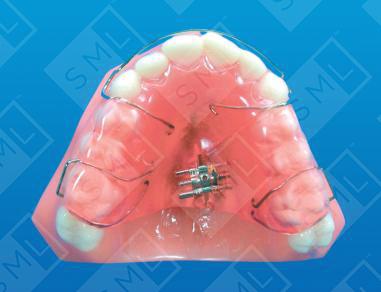Most crossbites that appear unilateral are, in fact, bilateral. They appear to be unilateral because the mandible shifts to avoid an occlusal interference. Before beginning treatment for a unilateral posterior crossbite, observe the relationship of the upper and lower teeth to each other -- first out of occlusion, then in occlusion. If no shift is observed -- and there is not a change anywhere in the occlusal relationship -- a true unilateral crossbite exists. The removable appliance shown here is particularly useful for moving an entire posterior segment that is in a unilateral crossbite. Designed to utilize the entire part of the arch that is not in crossbite for anchorage, it ensures that by turning the expansion screw, the segment that is in crossbite will move out buccally. The bite is opened with a posterior bite plane to clear the occlusion. The stationary side of the bite plane is usually ground into occlusion for extra stability. The moving side is left smooth.






